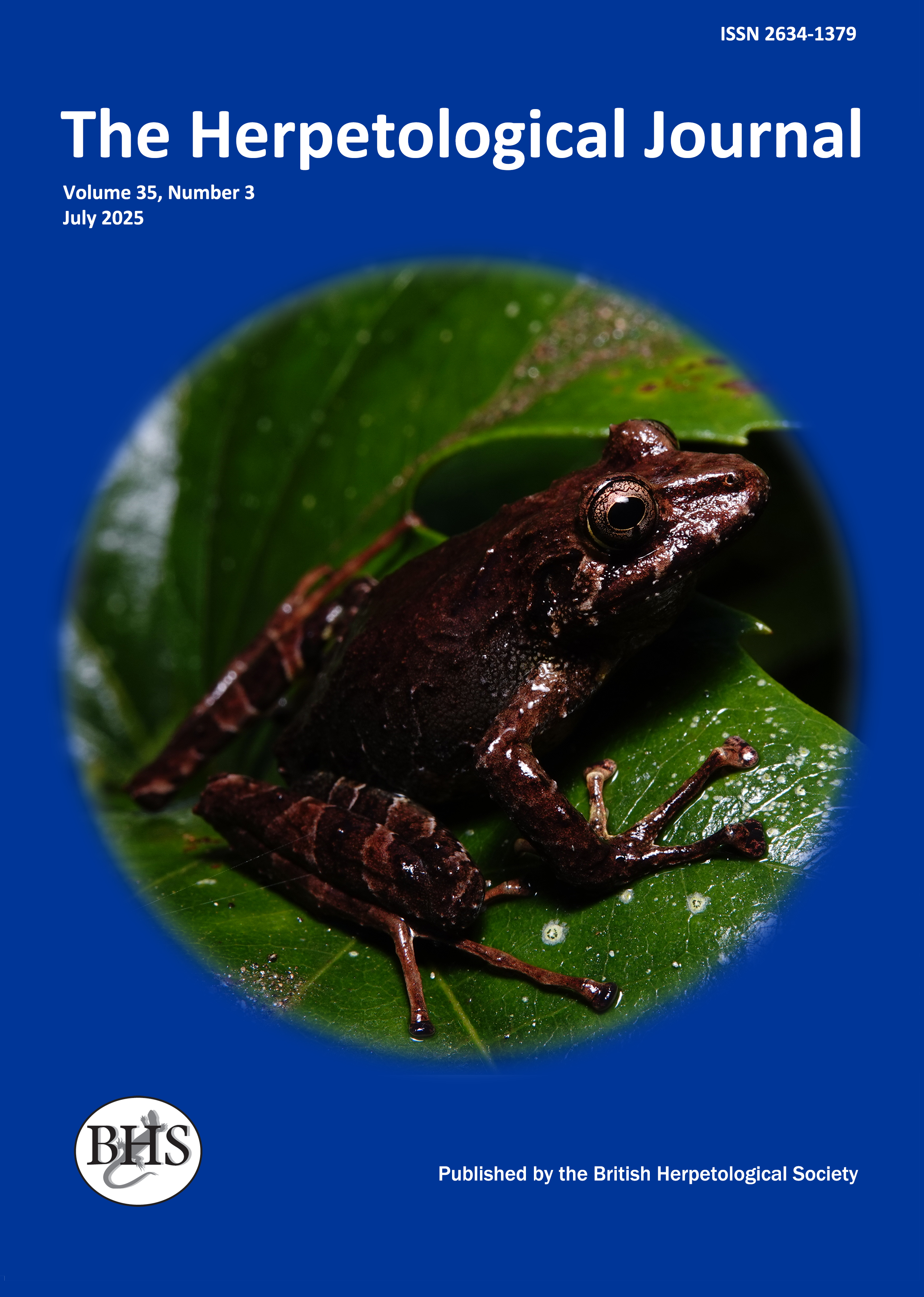
The Herpetological Journal
The Herpetological Journal is the Society's prestigious quarterly scientific journal. Articles are listed in Biological Abstracts, Current Awareness in Biological Sciences,Current Contents, Science Citation Index, and Zoological Record.
ISSN 0268-0130
2021 Impact Factor from Clarivate for the Herpetological Journal is 1.194, an increase of 0.332 from 2020.
pdf 05. Reproductive ecology of the stream-dwelling frog Feirana taihangnicus in central China
1594 downloads
Open Access
pp. 135-140
Authors: Chen, Xiao Hong; Yang, Jie; Qiao, Liang; Zhang, Li Xia & Lu, Xin
Abstract: We studied the breeding ecology of Feirana taihangnicus, a stream-dwelling frog endemic to central China, in a forest-covered mountainous area in north Henan. Frogs emerged from hibernation in mid March and oviposition took place between late April and early May. About one week before the oviposition period, both sexes had swollen cloacas, with tubercles being present on the dorsal skin of adult males. Males never developed vocal sacs, nuptial pads or any other obvious structures used in amplexus. Males were smaller than females. Sex ratio of the breeding population was female-biased. Communal oviposition habitats, which were used repeatedly across years, were in sun-exposed, slow-flowing sections of the stream. Eggs were found on the underside of rocks, deposited in a single layer. Clutch size per female averaged 425 eggs and egg diameter 3.63 mm. Larvae spent up to 27 months in streams before completing metamorphosis. Mark–recapture data showed that 306–513 frogs were present during the breeding season along the 5.5 km long stream in 2006, but only 131 frogs were detected in 2010. Frogs tended to use the same oviposition sites across years. In light of these data we discuss conservation needs for this species, which has a restricted distribution, specialized habitat and extended larval period.
Keywords: LIFE HISTORY, BREEDING, OVIPOSITION HABITAT

